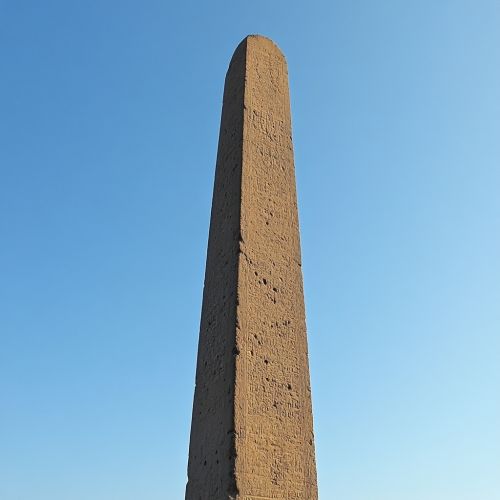Aksumite Empire: Difference between revisions
(Created page with "== History of the Aksumite Empire == The Aksumite Empire, also known as the Kingdom of Aksum, was an ancient civilization centered in the Horn of Africa, primarily in what is now northern Ethiopia and Eritrea. The empire emerged around the 1st century CE and lasted until approximately the 10th century CE. It was one of the most powerful and influential states in the region, known for its monumental architecture, advanced trade networks, and the adoption of Christianity....") |
No edit summary |
||
| Line 3: | Line 3: | ||
The Aksumite Empire, also known as the Kingdom of Aksum, was an ancient civilization centered in the Horn of Africa, primarily in what is now northern Ethiopia and Eritrea. The empire emerged around the 1st century CE and lasted until approximately the 10th century CE. It was one of the most powerful and influential states in the region, known for its monumental architecture, advanced trade networks, and the adoption of Christianity. | The Aksumite Empire, also known as the Kingdom of Aksum, was an ancient civilization centered in the Horn of Africa, primarily in what is now northern Ethiopia and Eritrea. The empire emerged around the 1st century CE and lasted until approximately the 10th century CE. It was one of the most powerful and influential states in the region, known for its monumental architecture, advanced trade networks, and the adoption of Christianity. | ||
[[Image:Detail-98027.jpg|thumb|center|Aksumite obelisk standing tall against a clear blue sky.|class=only_on_mobile]] | |||
[[Image:Detail-98028.jpg|thumb|center|Aksumite obelisk standing tall against a clear blue sky.|class=only_on_desktop]] | |||
=== Origins and Early Development === | === Origins and Early Development === | ||
Latest revision as of 07:50, 20 September 2024
History of the Aksumite Empire
The Aksumite Empire, also known as the Kingdom of Aksum, was an ancient civilization centered in the Horn of Africa, primarily in what is now northern Ethiopia and Eritrea. The empire emerged around the 1st century CE and lasted until approximately the 10th century CE. It was one of the most powerful and influential states in the region, known for its monumental architecture, advanced trade networks, and the adoption of Christianity.


Origins and Early Development
The origins of the Aksumite Empire can be traced back to the pre-Aksumite period, around the 5th century BCE, when the region was inhabited by various Semitic-speaking peoples. The early inhabitants engaged in agriculture, animal husbandry, and trade. The rise of Aksum as a significant political entity began in the 1st century CE, under the rule of King Zoskales, who is mentioned in the Periplus of the Erythraean Sea, an ancient Greek travel document.
The early Aksumite rulers established their capital at Aksum, a city that would become the political, cultural, and religious center of the empire. The strategic location of Aksum, near the Red Sea and the Nile River, facilitated trade with the Roman Empire, India, and the Arabian Peninsula.
Economic and Trade Networks
The Aksumite Empire was renowned for its extensive trade networks, which played a crucial role in its economic prosperity. The empire exported a variety of goods, including ivory, gold, emeralds, and exotic animals, while importing textiles, glassware, and spices. Aksum's control over the port of Adulis on the Red Sea coast was instrumental in maintaining its trade dominance.
The Aksumites minted their own coinage, which was used in both domestic and international trade. The coins often featured the image of the ruling king and inscriptions in Ge'ez, the ancient language of the Aksumites. The introduction of coinage facilitated commerce and helped to standardize economic transactions.
Religion and Culture
The Aksumite Empire is notable for its early adoption of Christianity. In the 4th century CE, King Ezana converted to Christianity, making Aksum one of the first states to embrace the religion. This conversion was influenced by Frumentius, a Syrian Christian who became the first bishop of Aksum. The adoption of Christianity had a profound impact on Aksumite society, leading to the construction of churches and the spread of Christian iconography.
The Aksumites are also known for their monumental architecture, particularly their stelae, which are large stone obelisks erected as grave markers. The most famous of these is the Obelisk of Axum, which stands over 24 meters tall and is intricately carved with geometric patterns and false doors.
Decline and Legacy
The decline of the Aksumite Empire began in the 7th century CE, due to a combination of internal and external factors. The rise of Islam in the Arabian Peninsula and the subsequent control of Red Sea trade routes by Muslim merchants diminished Aksum's economic power. Additionally, environmental changes, such as soil degradation and deforestation, contributed to the empire's decline.
By the 10th century CE, the Aksumite Empire had largely disintegrated, giving way to smaller regional states. Despite its decline, the legacy of Aksum persisted in Ethiopian culture and history. The Ethiopian Orthodox Church, which traces its origins to the Aksumite conversion to Christianity, remains a significant religious institution in Ethiopia today.
